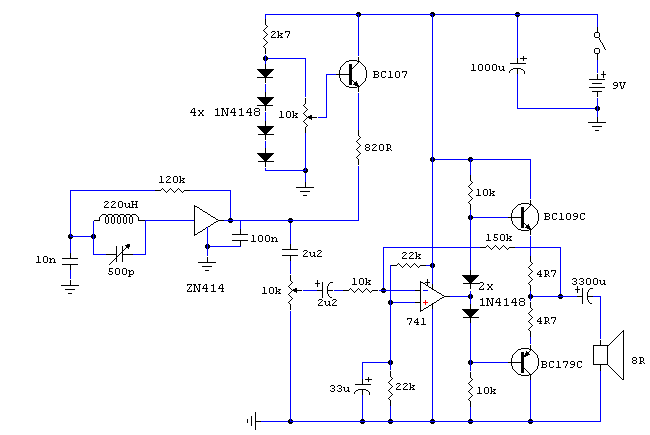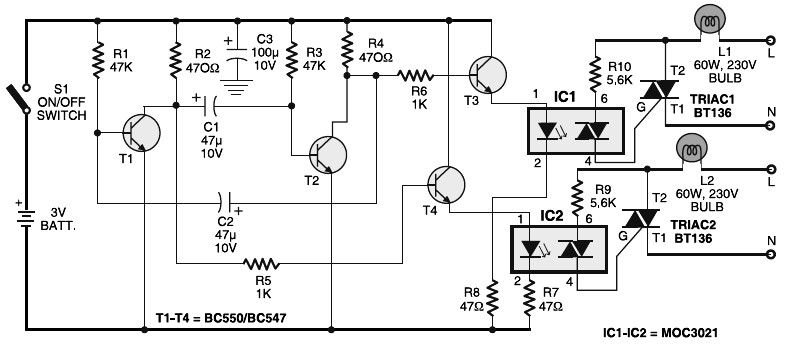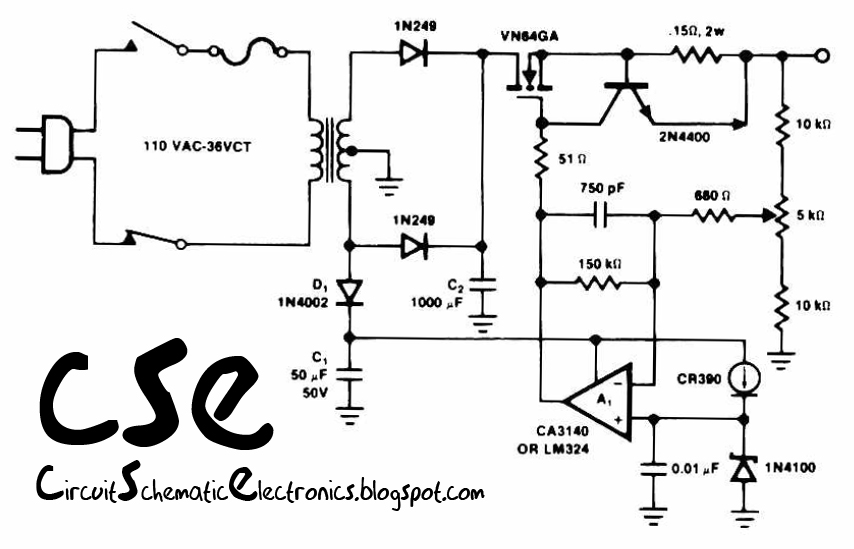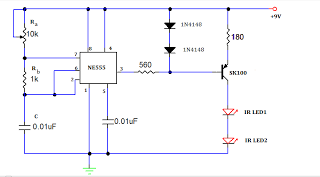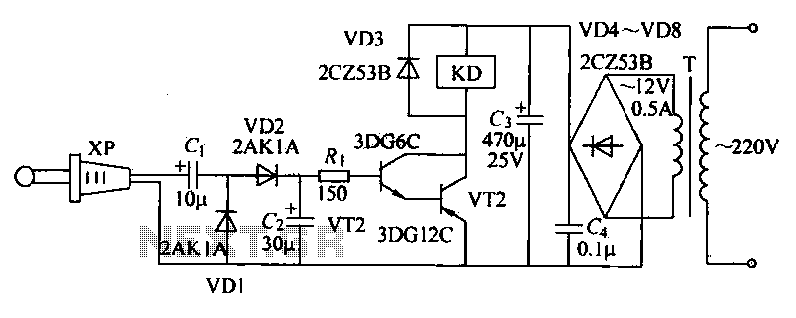
Aquarium incubator circuit diagram

The circuit features a 24V system with a 0.5W resistor functioning as a heating element (R7), which is embedded in a sand substrate within an aquarium. The heating element is connected to 24V bulbs at both ends. The resistor is encapsulated with waterproof epoxy resin for protection. A power transformer (B) is included in the design, and the aquarium temperature is monitored by a thermistor (R2). This setup is designed for a water tank with a capacity of 15 kg.
The schematic illustrates a heating system tailored for aquarium applications, utilizing a 24V power supply. The heating element, designated as R7, is a 0.5W resistor strategically placed in a sand medium to facilitate effective heat distribution throughout the aquarium environment. The inclusion of 24V bulbs at both ends of the resistor enhances the heating capability, ensuring that the water temperature can be raised efficiently.
The thermistor (R2) acts as a temperature sensing device, providing real-time feedback on the aquarium's thermal state. This feedback is crucial for maintaining optimal conditions for aquatic life. The thermistor's resistance varies with temperature, allowing a control circuit to adjust the power supplied to the heating element accordingly. This closed-loop control system is essential for preventing overheating and ensuring the stability of the aquarium's environment.
The power transformer (B) is responsible for converting the input voltage to the required levels for the heating element and the bulbs. It is designed to handle the power requirements of the entire system while ensuring safety and reliability. The waterproof epoxy resin encapsulation of the resistor not only protects it from moisture but also enhances the durability of the heating element, making it suitable for long-term use in aquatic settings.
This circuit configuration is specifically designed for aquariums with a water capacity of 15 kg, making it an ideal solution for small to medium-sized tanks. The combination of a robust heating element, effective temperature monitoring, and reliable power supply ensures that the aquarium can maintain a stable and suitable environment for its inhabitants. As shown in the circuit with 24 300 in Europe, a 0.5W resistor in parallel as a heating element R7 buried in the sand bunk aquariums with 24V bulbs connected to both ends of th e heater is energized for instructions. Resistance and was coupled with a waterproof epoxy resin. B is a power transformer. Aquarium temperature determined by the thermistor R2. This equipment is suitable 15KG water tank.
The schematic illustrates a heating system tailored for aquarium applications, utilizing a 24V power supply. The heating element, designated as R7, is a 0.5W resistor strategically placed in a sand medium to facilitate effective heat distribution throughout the aquarium environment. The inclusion of 24V bulbs at both ends of the resistor enhances the heating capability, ensuring that the water temperature can be raised efficiently.
The thermistor (R2) acts as a temperature sensing device, providing real-time feedback on the aquarium's thermal state. This feedback is crucial for maintaining optimal conditions for aquatic life. The thermistor's resistance varies with temperature, allowing a control circuit to adjust the power supplied to the heating element accordingly. This closed-loop control system is essential for preventing overheating and ensuring the stability of the aquarium's environment.
The power transformer (B) is responsible for converting the input voltage to the required levels for the heating element and the bulbs. It is designed to handle the power requirements of the entire system while ensuring safety and reliability. The waterproof epoxy resin encapsulation of the resistor not only protects it from moisture but also enhances the durability of the heating element, making it suitable for long-term use in aquatic settings.
This circuit configuration is specifically designed for aquariums with a water capacity of 15 kg, making it an ideal solution for small to medium-sized tanks. The combination of a robust heating element, effective temperature monitoring, and reliable power supply ensures that the aquarium can maintain a stable and suitable environment for its inhabitants. As shown in the circuit with 24 300 in Europe, a 0.5W resistor in parallel as a heating element R7 buried in the sand bunk aquariums with 24V bulbs connected to both ends of th e heater is energized for instructions. Resistance and was coupled with a waterproof epoxy resin. B is a power transformer. Aquarium temperature determined by the thermistor R2. This equipment is suitable 15KG water tank.
